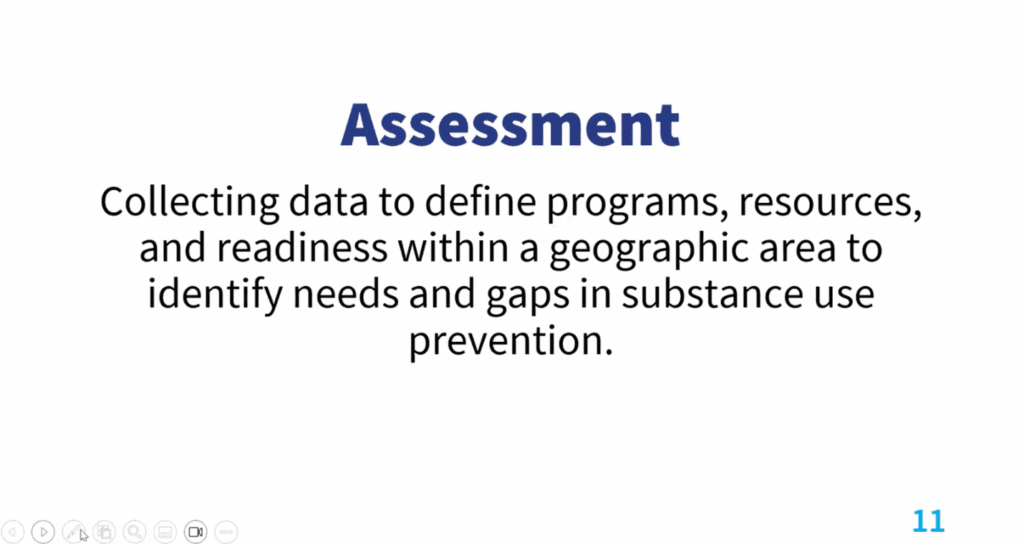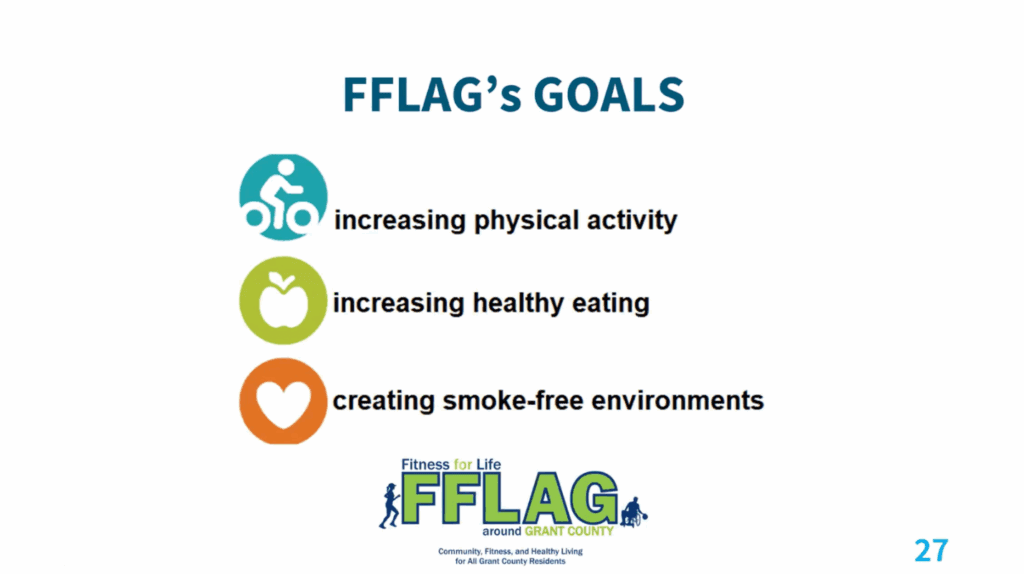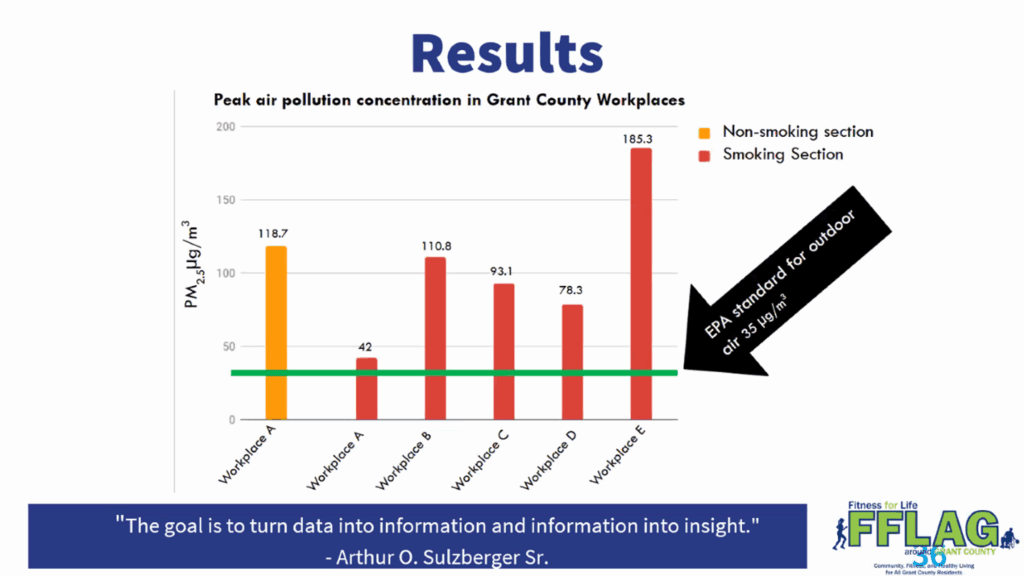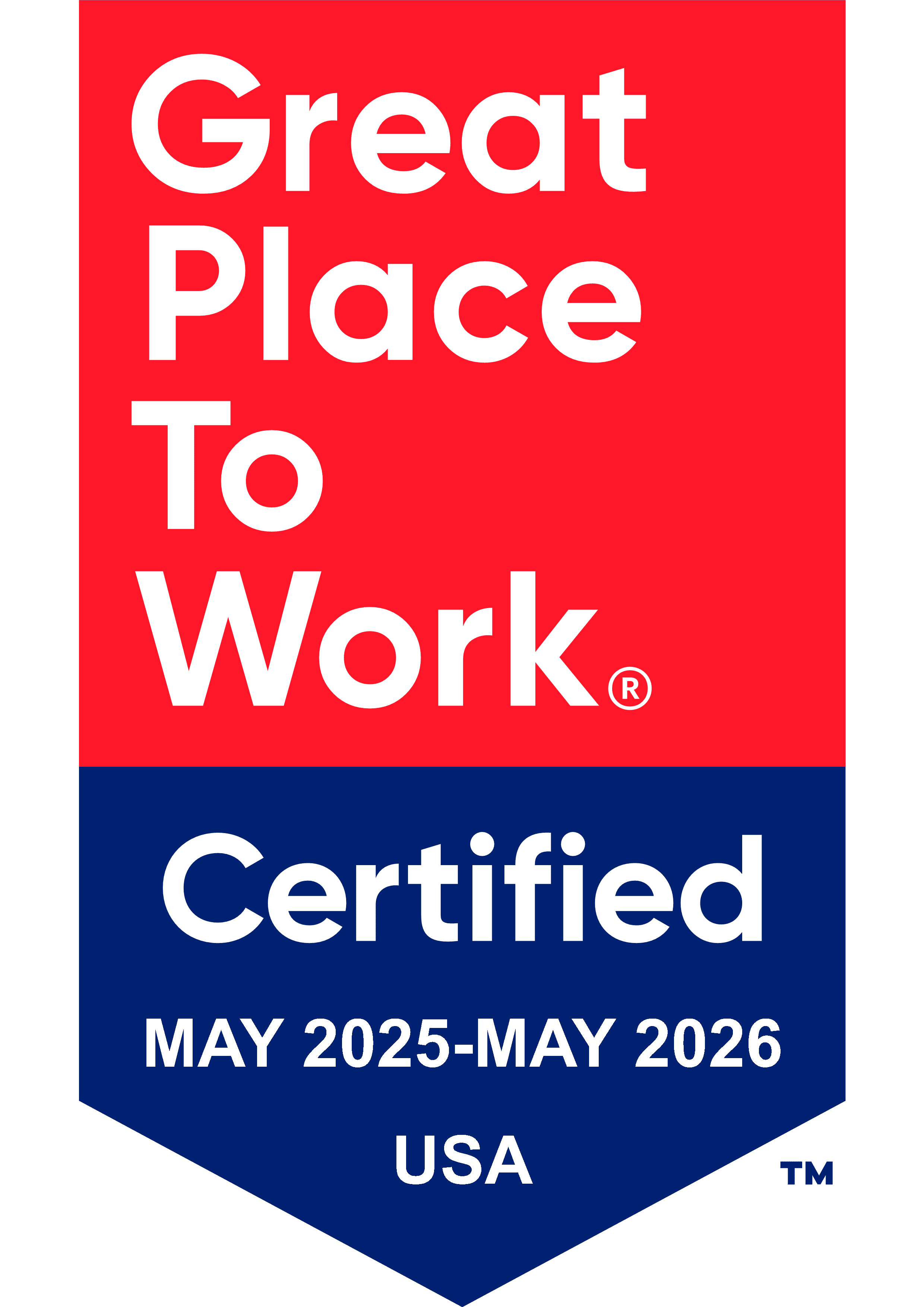Last week, we hosted the fifth webinar in our 18-part webinar series on CADCA’s Coalition Competencies, focusing on another foundational competency for coalitions: Assessment. Assessment is all about collecting and using data to understand your community’s needs, strengths, and readiness for change. Read on for a real-world example on how a local coalition used data to successfully pass the region’s first comprehensive smokefree policy.
As Katie Wiedeman from WashU’s Center for Public Health Systems Science described, assessment helps coalitions move beyond assumptions and answer key questions. For example, where is an issue happening? When is it occurring? Who does it impact, and how widespread is the impact? Just as importantly, it also reveals what resources already exist, whether people are ready for change, and what history may be shaping current conditions.

Wiedeman reminded attendees that assessment is strongest when coalitions use both quantitative data (e.g., surveys, public health statistics, coalition records) and quantitative data (e.g., interviews, focus groups, or observations). For example, numbers can tell you how many young people are vaping in your community, but only conversations with youth can explain why it’s happening and how they’re accessing products. Using both types of data can help you see a full picture of your community.
When planning an assessment, the first thing you need to consider are your objectives and goals in order to create a clear strategy moving forward and help frame your next steps. This consists of:
- Defining your objectives and setting SMART goals (specific, measurable, attainable, relevant, and time-based)
- Assigning roles: determine who will be in charge of data collection and analysis
- Choosing methods that fit your community, whether that’s surveys, focus groups, community maps, or Photovoice projects
- Thinking early about how results will be shared with coalition members, partners, and the wider community
- Planning for regular assessment to determine how the issue is changing in your community
And above all, it means involving community members throughout the process.
To see what it looks like in practice, we heard from Marsha Bach with the Northern Kentucky Health Department about Fitness for Life Around Grant County (FFLAG). FFLAG’s mission is to educate and bring awareness to Grant County residents about physical fitness and healthy lifestyles, and they’ve been at it for more than 20 years. They’ve been able to secure $2.3 million for local initiatives with the goal of increasing physical activity, improving healthy eating, and creating smokefree environments. In 2023, Grant County scored worse than most health outcomes than the state on multiple measures: 24% of adults smoke, and 38% are considered obese and lack physical activity. Over the years, they’ve established orchards in parks, created community gardens in schools and low-income neighborhoods, hosted fitness events, and enhanced playgrounds, trails, and outdoor fitness stations.

As part of their ongoing work, the coalition conducts health and wellness assessments every five years to address the needs of the county. Residents generally rated Grant County as a healthy place to live and felt their overall health was good, but most reported eating fewer than five servings of fruits and vegetables per day. Nearly all respondents (96%) believed it is important for workers to breathe smokefree air in the workplace and that it is important for the public to breathe smokefree air inside. At the same time, residents noted gaps in the built environment: only 40% thought sidewalks and shoulders were in good condition, and many said it was not easy to walk or bike to destinations like supermarkets, libraries, or churches.
The coalition also used existing data to supplement their local findings. County health rankings and CDC data revealed that Kentucky is second in the nation for smoking rates and first in cancer deaths. Grant County had the highest percentage of smokers in Northern Kentucy compared to surrounding counties. These insights underscored the urgency of implementing a smokefree policy.
To dig deeper, FFLAG partnered with the Northern Kentucky Health Department, University of Kentucky’s Breathe program, and other local coalitions to launch the Citizen Science Project. The aim was to reduce youth substance use, lower secondhand smoke exposure, and promote healthy lifestyles. Community members were trained to collect data and conduct policymaker assessments.
Former Williamstown Mayor Rick Skinner described how the coalition used this data to push for policy change. As Williamstown prepared for the arrival of the Ark Encounter, a new tourist attraction projected to draw nearly a million visitors annually, the city also began upgrading its parks and sidewalks. Knowing that tourism and growth would bring in new challenges, the coalition focused on improving community health. Using portable AirBeam monitors from the University of Kentucky, coalition members measured air quality in public spaces across Williamstown. The data showed that indoor air quality in smoking establishments was twice as poor as outdoor air. With this evidence in hand, the coalition and its partners made the case for a comprehensive smokefree ordinance.

After public hearings and ongoing engagement, the Williamstown City Council voted to pass the policy in September 2018. It took effect January 1, 2019, making Williamstown the first jurisdiction in Northern Kentucy with such a law. The ordinance banned smoking in all indoor public places; within 25 feet of doors, entries, windows, or ventilation units in public places; and in public outdoor seating areas and parks.
This policy win started with assessment: using data to identify a problem, engaging the community in the process, and building lasting change. When done right, assessment is the foundation for decisions that actually fit your community.
To close out the webinar, CADCA trainer Kristina Clark reminded attendees that assessment is not something coalitions do alone. The role of the coalition is to bring the right people to the table, build a thoughtful timeline for data collection, and share the results in ways that resonate with different audiences. Assessment is ongoing, and the more intentional that coalitions are with the process, the stronger their impact will be.
Watch the webinar recording here to learn how to incorporate assessment into your efforts. Join our next webinar in the Competencies in Focus series on October 15 at 1 PM ET, as we take a closer look at the Readiness competency.


